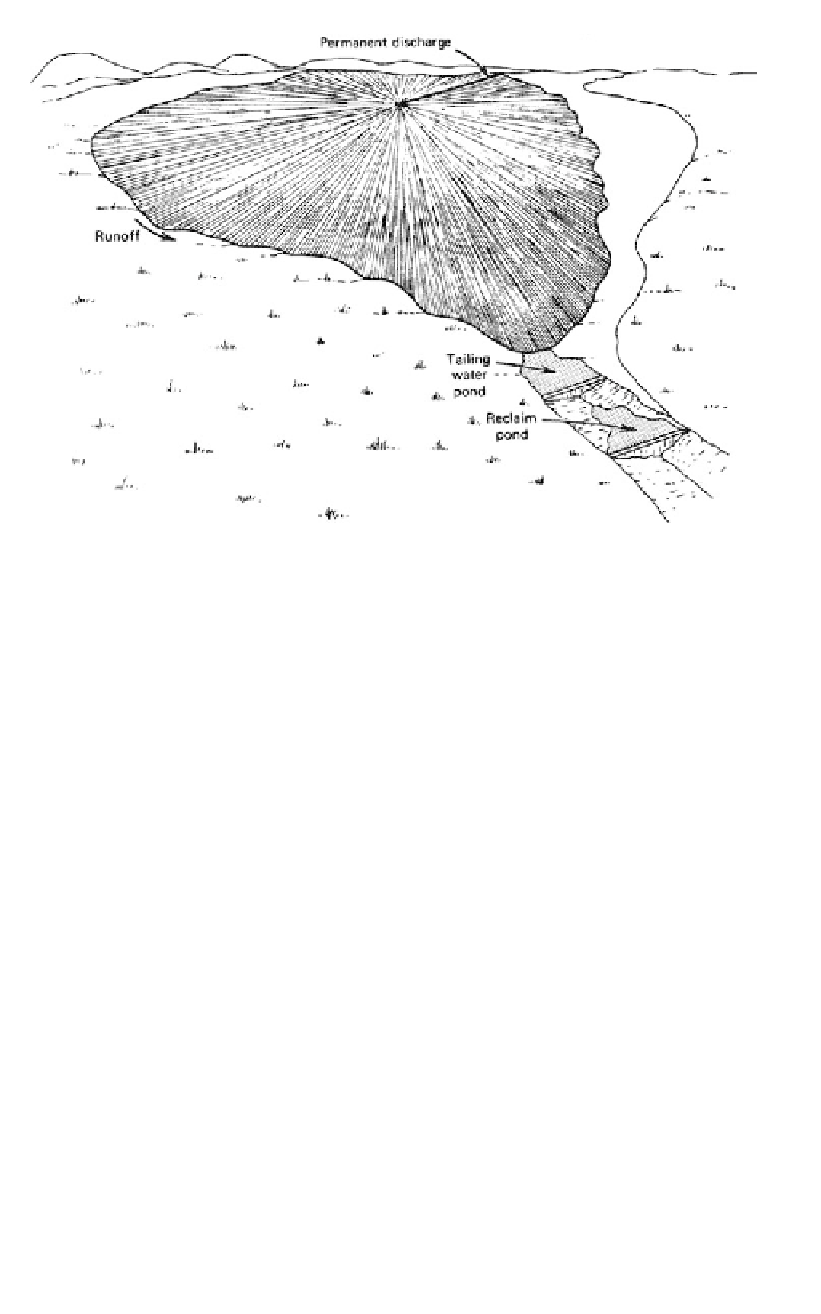Environmental Engineering Reference
In-Depth Information
Figure 19.34.
Thickened discharge disposal method (diagram from Vick, 1983, reprinted from
Robinsky, 1979).
collection. It has been used successfully in at least one mine in Australia but in others it
has been less successful.
Vick (1983) and Ritcey (1989) cite studies which have shown that some tailings
can liquefy and flow at a slope of 6° and Vick cautions the use of the method in seismic
areas. With advances in thickening technology some of the authors' reservation about
the method are lessened. We have some concerns about surface erosion in other than
arid areas and note that the method is not widely used, presumably on economic
grounds.
19.5.7.2
Co-disposal
Co-disposal of the coarse waste (“coarse reject”) and tailings from coal washeries
involves combining the waste streams and pumping them together to the storage facility.
Williams and Gowan (1994) suggest there can be significant cost savings compared to the
separate disposal of the coarse reject and the tailings, and cites several Australian coal
mines as using the techniques.
They indicate that the ratio of coarse to fine reject (by dry weight) ranges between 1.5
to 1 and 5.5 to 1, averaging about 3.5 to 1.
There is some breakdown of the coarse reject during pumping and further breakdown
by chemical means or weathering (slaking) on the surface of the disposal area.
The combined materials are pumped at a solids content of 20% to 30%. The advan-
tages claimed for co-disposal are (Williams and Gowan 1994):
Advantages claimed:
- May eliminate the need to build engineered tailings dams;
- Improved stability (shear strength) and the potential to use upstream construction;
- Reduced need for trucks to dispose coarse reject;
- Reduced cost compared to the cost of the two separate waste streams;

